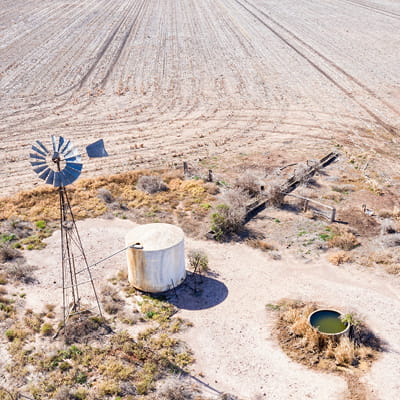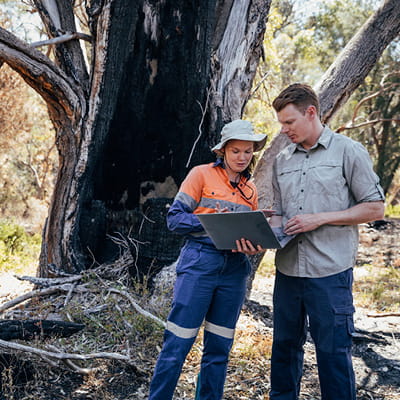El Niño, La Niña, ENSO, IOD – what does it all mean?
- What goes on in the Indian and Pacific oceans has a direct impact on the weather we experience here in Australia
- Each phase or cycle of these weather patterns, bring with them different conditions – from more rain to warmer temperatures
- By understanding what’s in store, you can take steps to safeguard your property.
It’s impossible to avoid news stories about El Niño and La Niña, the El Niño Southern Oscillation (ENSO), the Indian Ocean Dipoles (IOD), and the impact they have on our weather here in Australia.
But what on earth does it all mean?
Sometimes it can feel as if you need a degree in meteorology to really understand it – so we’ve broken it down to help you know your IODs from your ENSOs!
Why is it important to know about the ENSO cycle, El Niño, La Niña and IOD?
Essentially, they all affect the weather that we experience, not just in Australia, but across the world. The ENSO cycle in particular, is the climate pattern responsible for extreme weather events, so by brushing up on our meteorological knowledge, we can understand the likelihood of these events – for example, floods or droughts – and prepare for whatever they may bring.
First things first, what is an ENSO cycle?
The ENSO cycle is a natural climate pattern that is determined by the winds, clouds and water temperature in the central and eastern tropical Pacific Ocean.
It has three ‘states’ – neutral, El Niño and La Niña,1 all of which mean different things for the weather we experience, particularly in the eastern, northern and more central areas of Australia. It generally takes around four years to swing from El Niño to La Niña and back again.2
What happens during the neutral phase of an ENSO cycle?
During the neutral phase, trade winds – winds that blow east to west in the tropical Pacific – warm up the water in the western Pacific. While over in the east, those same trade winds create cooler water off the coast of South America.
The heat rising to the north of Australia and then descending near South America causes a cycle called the ‘Walker Circulation’. We’re in this state more than half of the time – and during this time we’re more likely to see ‘normal’ weather here in Australia, although droughts and floods are still possible.3
What is La Niña?
In a La Niña phase, those trade winds get stronger and stronger. The water north of Australia gets warmer, while the water by South America gets cooler, meaning there’s an even greater temperature difference. Once this phase begins, it’s ‘locked in’ for at least 12 months.4
What is the weather impact of La Niña on Australia?
With these higher water temperatures, we get more cloud, evaporation, and rain here in Australia – meaning lower daytime temperatures and an increased chance of flooding.5
What is El Niño?
El Niño is the opposite of La Niña. During El Niño, the trade winds reduce or even reverse, meaning those warmer waters drift back towards South America. The change in temperature pattern results in the water to the east becoming warmer and evaporation, cloud and rain moving away from Australia.6
What is the weather impact of El Niño on Australia?
With a drier climate comes increased chances of drought, higher temperatures, less rainfall, a longer frost season and fewer tropical cyclones.7

What is the Indian Ocean Dipole (IOD)?
The IOD is another climate pattern that affects the weather in Australia. It describes the difference in sea surface temperature between the eastern and western parts of the Indian Ocean – from the area around Indonesia to the east coast of Africa.
Essentially, it’s like ENSO, but in the Indian Ocean.8 The IOD has three phases – neutral, positive and negative.
How does a positive IOD impact weather in Australia?
During a positive IOD phase – where the sea surface temperature is higher in the western Indian Ocean, we’ll see fewer clouds in Australia’s northwest, and less rainfall in southern Australia and towards the Top End.
How does a negative IOD impact weather in Australia?
A negative IOD occurs when the water in the western Indian Ocean is cooler than the eastern Indian Ocean; winds become westerly, bringing more cloud and rain, which can cause flooding, particularly in the northwest and southern areas of the country, as well as the Top End.9
When does a neutral Indian Ocean Dipole occur?
The neutral IOD phase occurs when there is no significant difference in temperature between the eastern and western Indian Ocean.
Are ENSO and IOD cycles linked?
It is thought that the two are related – typically a positive IOD will be associated with El Niño, while a negative IOD is associated with La Niña.10
Why is it important to know what the weather has in store?
Knowledge of what’s going to happen from a weather perspective is always valuable. After all, if you know there’s an increased likelihood of a flood or drought you can prepare your home and business to better deal with it.
For example, if Australia is forecast to experience drier conditions and you’re in a bushfire prone area, then you might want to prepare your home and business for bushfires. If there’s a higher risk of flooding and storms, then, of course, it makes sense to prepare your home and business accordingly, too.

Remember to plan ahead
Arming yourself with as much information as possible before an event occurs is essential. Make sure you download the BOM app as well as state and territory government apps to alert you to weather-related dangers. In addition, it’s always a good time to check your home and contents insurance* is up to date and covers your property and possessions adequately.
If you would like to talk about your insurance needs, reach out to your broker, contact our team on 133 723, or fill in our online enquiry form today.
*To decide if QBE’s products are right for you, please ensure you obtain and consider the Policy Wording or Product Disclosure Statements and Target Market Determinations, available online at QBE.com/au. Insurance issued and underwritten by QBE Insurance (Australia) Limited (ABN 78 003 191 035, AFSL 239545).
1 What is the El Niño–Southern Oscillation (ENSO) in a nutshell? – NOAA Climate.gov
2 About Australian Climate – El Niño Southern Oscillation – Bureau of Meterology
3 About Australian Climate – El Niño Southern Oscillation – Bureau of Meterology
4 About Australian Climate – El Niño Southern Oscillation – Bureau of Meterology
5 About Australian Climate – El Niño Southern Oscillation – Bureau of Meterology
6 About Australian Climate – El Niño Southern Oscillation – Bureau of Meterology
7 About Australian Climate – El Niño Southern Oscillation – Bureau of Meterology
8 About Australian Climate – Indian Ocean Dipole – Bureau of Meterology
9 About Australian Climate – Indian Ocean Dipole – Bureau of Meterology
10 About Australian Climate – Indian Ocean Dipole – Bureau of Meterology











